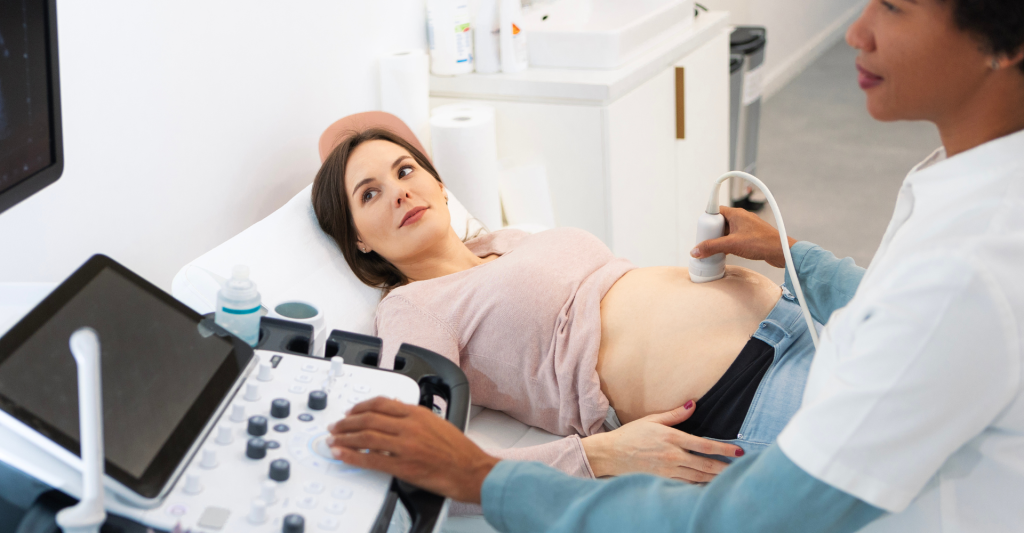Infertility rates around the world continue to rise, and assisted reproductive technologies like IVF (in vitro fertilization) offers up the best chance at starting a family for many Canadian households.
IVF is a commitment for prospective parents – financially, physically and emotionally. It’s important to know what to expect of the process as there are no guarantees and there are often multiple rounds of IVF treatment before a successful one takes hold.
Infertility can also be emotionally exhausting and heartbreaking for the prospective mother. Sometimes, it helps to talk to others experiencing the same problems as you are. Find an infertility support group here.
Fertilization can be tricky, as you already know. Doctors want to retrieve more than a single egg required for ovulation, and will typically aim for 10-12 mature eggs, thereby giving the prospective mother a 65% chance of a successful ferilization.
This process usually takes between eight days to two weeks from starting medication to retrieving an egg.
To ensure you stay on track, you’ll have appointments for blood work and ultrasounds. Your doctor may change up your routine to try and maximize the potential yield.
Your doctor will not go through with the procedure if they don’t think they can retrieve more than two mature eggs.
Step One: Hormones
Instead, to increase your egg release and the chance of the procedure working, your doctor will try to retrieve up to 40 eggs, only 10-12 of which may be mature or viable enough. mature eggs. This gives women about a 65 per cent chance of getting pregnant.
If you’re squeamish around needles, you may want to get your partner involved. To stimulate egg production and release, you’ll be put on hormones, some of which are administered as a shot.
Possible hormones that are injected:
- Follicle stimulating hormones (FSH) – These hormones stimulate the development of multiple eggs in the ovaries which will be released during ovulation.
- Gonadotropin-releasing hormone (GnRH) agonists, GnRH antagonists, or progestins – These drugs prevent premature ovulation to ensure that the mature eggs are not released before your doctor can collect them.
- Human chorionic gonadotrophin (hCG) and/or GnRH agonists – Once the eggs are mature and you’ve gotten the “all-clear” from your doctor, you’ll take this drug to trigger ovulation.
- Estrogen supplements – These supplements can help thicken the lining of the uterine wall, which increases your chances of a fertilized egg attaching.
Any of the above hormonal injections or supplements can result in side effects ranging from mild to severe, and in extreme cases can put a mother-to-be at risk to her overall health. Your IVF doctor should be discussing this with you. See below for a breakdown of the possible side effects.
Side Effects (click on each category to display)
- higher risk for multiple births
- Headaches
- hot flashes
- blurred vision
- nausea
- changes in cervical mucus
- bloating
- rarely blood blisters at the injection site
- swelling at the injection site
- possibly ovarian hyperstimulation
- very rarely multiple births
- ectopic pregnancies
- irritability
- breast tenderness
- bruising at the injection site
- hot flashes
- headaches
- nausea
- blurred vision
How expensive is IVF?
Read this article. The Price of Parenthood: A Breakdown of IVF Costs Across Canada>>>

Step Two: Egg retrieval
Egg retrieval is an invasive procedure, but knowing what to expect from the process can help mitigate some of the anxiety surrounding this process.
Typically performed either in your doctor’s office or a clinic depending on the plan you made with your doctor beforehand, for egg retrieval, you’ll be required to stop taking your fertility medication 34-36 hours prior to retrieval.
First, you’ll be given medicine to help you relax and to keep you from feeling pain associated with the procedure.
Transvaginal ultrasound aspiration is the most common method of egg retrieval. An ultrasound device is placed in the vagina to find the eggs, which may also be referred to as follicles (the sac containing an egg). Then, a thin needle is inserted into the ultrasound device (which is acting as a guide) to collect the eggs.
The needle is connected to a small suction device which can collect multiple eggs in about 20 minutes.
If entry through the vagina isn’t possible or practical, your doctor may ultrasound your stomach to find the eggs and guide the needle through the stomach to the eggs.
It’s common for women to feel pressure, cramping, and/or a sensation of fullness after the procedure. Take it easy for at least 24 hours afterwards, even if you feel fine.
Curious about freezing your eggs? Read this article >>>
Part Two: Sperm retrieval
Sperm can either be collected on the morning of the egg retrieval or can be frozen in advance.
Usually, sperm is collected from the donor through masturbation, but can also be retrieved from the testicles using a needle or surgery if ejaculation is a problem. Needless to say, the donor may be a partner or not depending on the arrangements made.
There is not much difference in success rate between frozen and fresh eggs/sperm. Talk to your doctor about the pros and cons of each to decide what works best for you and your budding family.
Step Three: Fertilization
There are a couple of ways your fertility team may choose to fertilize the collected samples.
Conventional insemination is the most common. Your doctor mixes healthy sperm and mature eggs in an incubator. The controlled environment makes it the optimal conditions for fertilization.
Intracytoplasmic sperm injection (ICSI) often comes with an extra cost and is usually when there is an issue with semen or when previous IVF cycles haven’t panned out. With ICSI, a single sperm is injected into each mature egg.
If you’ve experienced trouble with IVF rounds before or if you’re using frozen embryos, ask your doctor about “assisted hatching”. It can help eggs attach to the uterine wall more successfully.
Genetic Testing
You may also be able to gain additional insight into your embryo with preimplantation genetic testing. While in the incubator, a sample is taken from the embryo and is tested for genetic diseases and/or proper chromosomes.
While preimplantation genetic testing can lower the chance of passing on a genetic disorder, it doesn’t erase the possibility. Genetic testing comes with an extra cost.
Learn more about prenatal testing in Canada. Read this article >>>
In Canada, you can even obtain an accurate 3-generation family genetic and ethnic history to identify possible genetic conditions or malformations you could pass on to a child before starting IVF. The more severe the issue, the more detailed a history is needed (i.e. cystic fibrosis or congenital heart disease).
“A history of previous birth of a low birthweight infant, previous cesarean sections, multiple previous spontaneous abortions, prior stillbirth, or uterine anomaly identifies women at increased risk for recurrent [miscarriage], preterm birth, or stillbirth,” according to a study.
Certain populations will require specific screenings for issues that disproportionately affect them. Here are some examples:
- Ashkenazi Jew – Elevated risk of multiple genetic conditions, including Tay–Sachs;
- African – Elevated risk of sickle cell anemia and thalassemia;
- Mediterranean and Asian – Elevated risk of thalassemia.
Step Four: Embryo transfer
About two to six days after your eggs have been collected, it’s time for the embryo to be transferred from incubation into the uterus. Though the procedure is often painless, your doctor may offer you a mild sedative to help you relax and reduce post-procedure cramping.
To implant the embryo, your doctor will feed a catheter through your vagina, cervix, and into your uterus. Then, a syringe with your embryos and a small amount of liquid is attached to the other end of the catheter so they can be guided into the uterus.
If the process is successful, an embryo should attach to the uterine wall within 6-10 days after the transfer. Even though the egg may attach, you’ll have to wait at least two weeks after the transfer to take a pregnancy test.
Mayo Clinic lists possible side effects of the embryo transfer as:
- Passing a small amount of clear or bloody fluid shortly after the procedure. This is due to the swabbing of the cervix before the embryo transfer.
- Breast tenderness due to high estrogen levels.
- Mild bloating.
- Mild cramping.
- Constipation.
Though you can theoretically return to your daily life after the procedure, it’s recommended that you take it easy immediately afterwards, while being mindful that exercise and sex may cause discomfort. Ask your doctor when you can restart activities.
Do you have unanswered questions about IVF and/or infertility? Ask us at info@thehealthinsider.ca. We’d be happy to cover off any related topics in future articles.
~ Read more from The Health Insider ~
- Bleeding Gums May Impact More Than Just Your MouthBleeding gums aren’t normal—they could be the first sign of gum disease, which may impact your heart, lungs, and more.
- Paying for IVF in Canada: Your Guide to Grants, Insurance, and Tax BreaksHaving a family shouldn’t bankrupt you. Though IVF is expensive, Canadians can turn to grants, tax breaks, and fundraising to offset costs.
- IVF: Your Journey to ParenthoodHere’s a step-by-step guide to the IVF process… From hormone injections to embryo implantation, we break it down for you.
The information provided on TheHealthInsider.ca is for educational purposes only and does not substitute for professional medical advice. TheHealthInsider.ca advises consulting a medical professional or healthcare provider when seeking medical advice, diagnoses, or treatment. To read about our editorial process, click here.













